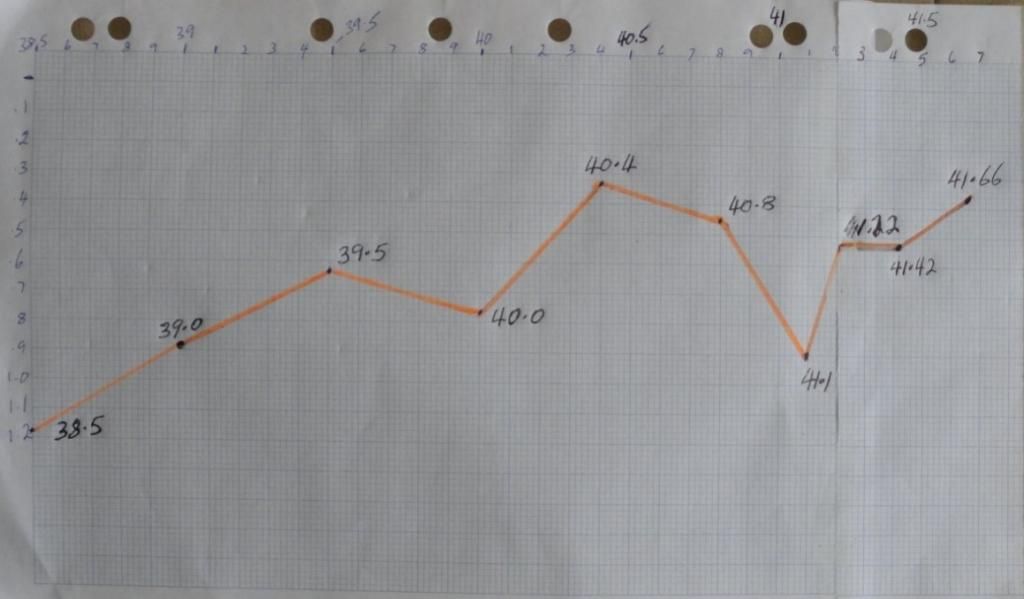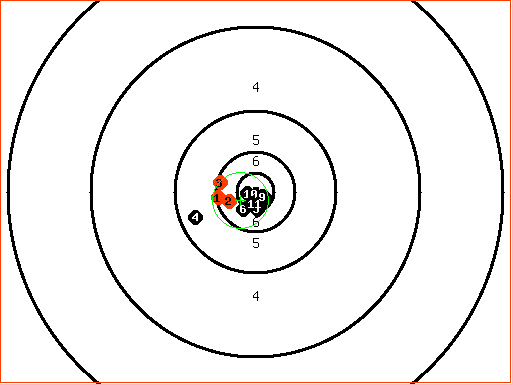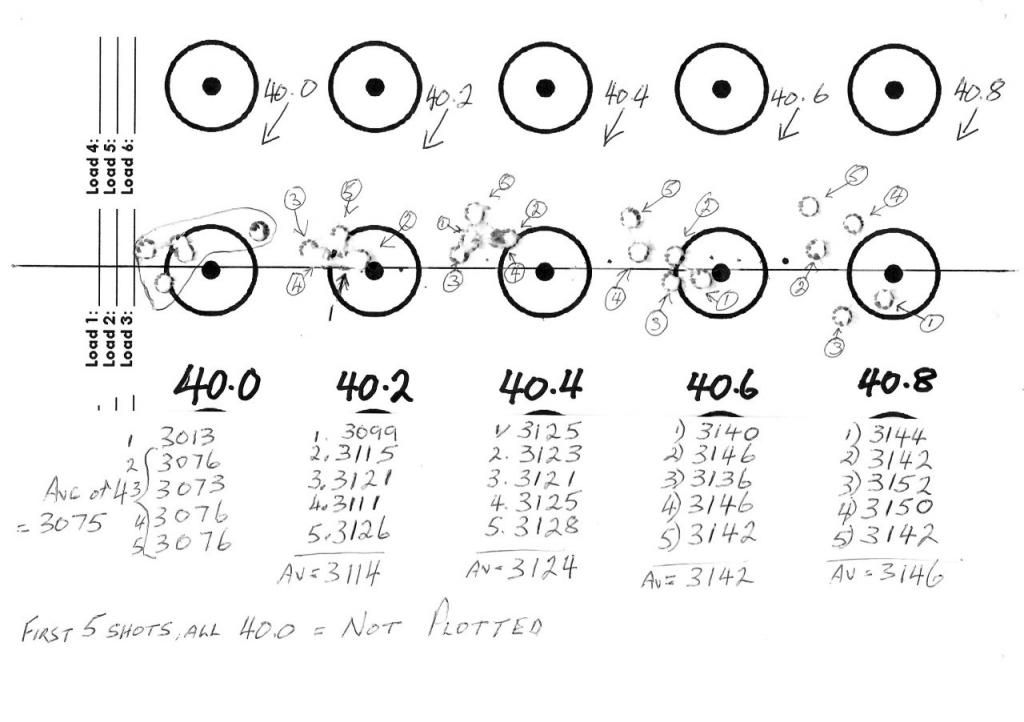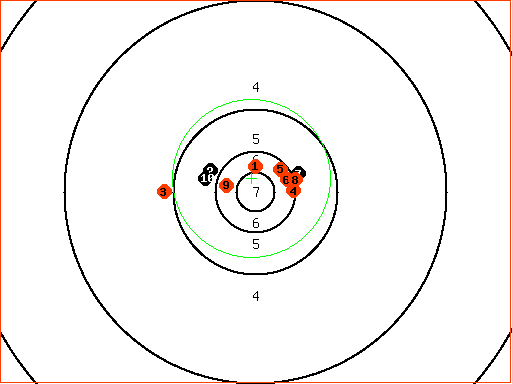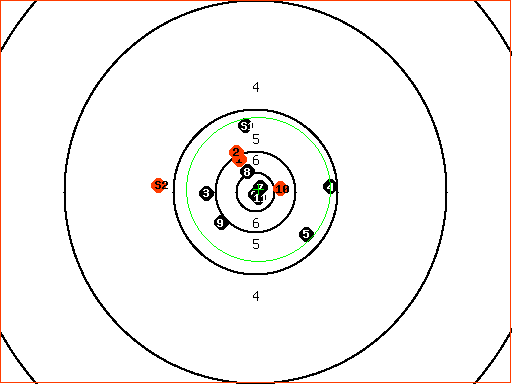Some of you probably remember my posts a while back about a red hot Broughton 6mm barrel that i killed by inadvertantly (read "STUPIDLY"
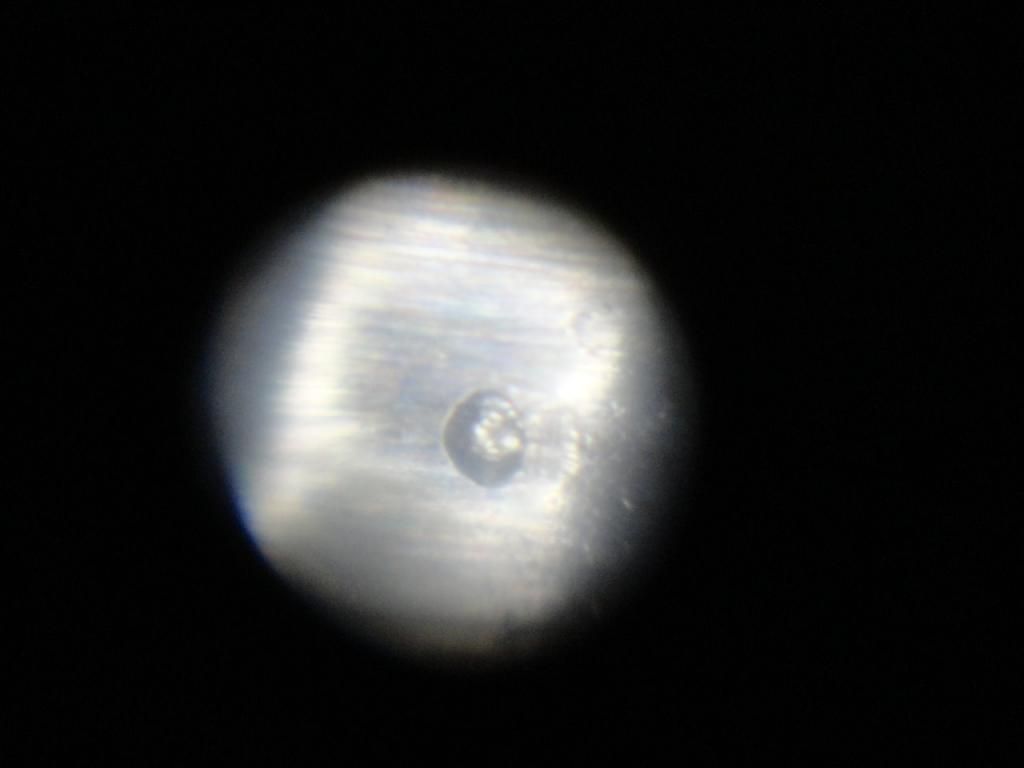
Before i killed it, that barrel shot this 3 shot group at 300 yds with shots 35-37
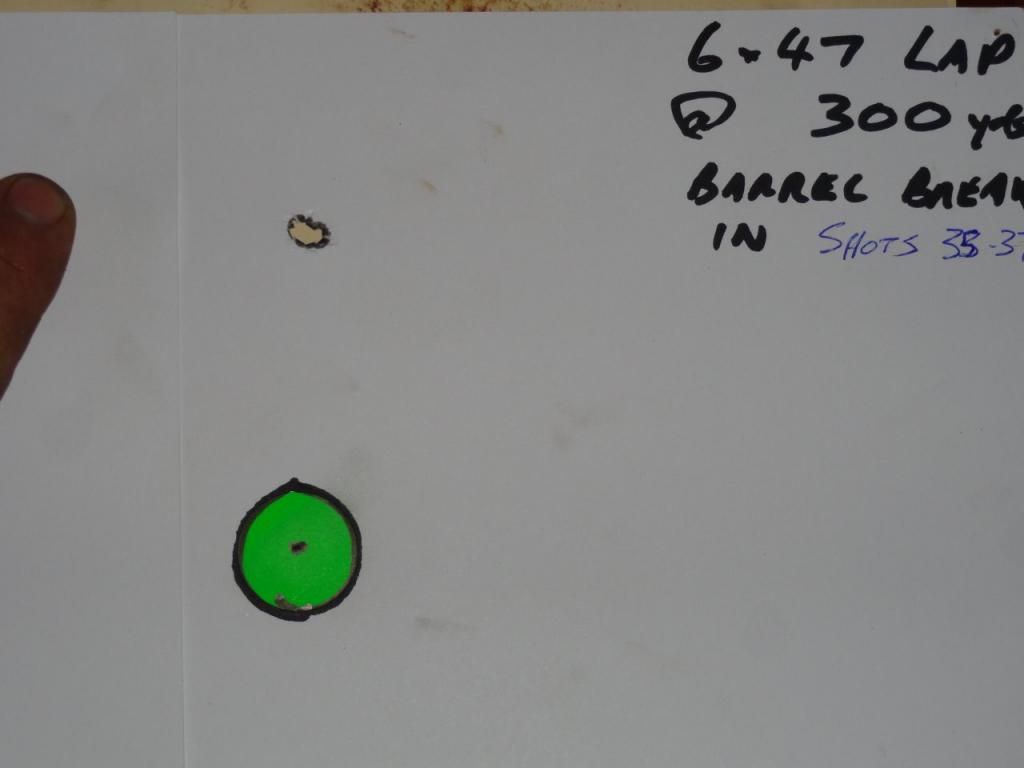
After killing it, I concentrated on my 284 barrels for a while, but finally got another Broughton barrel off Phil Jones, chambered in 6 x 47 Lapua. It shot quite well when i used it, until i finally ran out of 105gr Berger VLDs, and with 1000 105gr Hybrids on the shelf it was time to get a load working with them.
This was about 6 weeks ago, at the same time as i got the QUICKLOAD software.
QL showed me an Optimal Barrel Time (OBT) node using N150 powder (i had an unopened 1 kg tub) that was going to be 100% of powder burnt on bullet exit, so i decided to go with that.
That could well have been my first really bad decision, coz in hindsight my very first F Open rifle 3 years ago only ever shot AR2209 and i did enough with it to trouble some 7mms at OPMs. Hindsight is wonderful !!
Anyway....I just couldnt get the damn thing to shoot a decent group at all with the N150 powder. Being Hybrids, I tried jumping everything from 005", 010", 015", 020", 025", 030", 040", 060" ....all at about 3100 fps and couldnt get it to shoot. Tried jamming 008-010" and it started to look OK.
I then went back to AR2209, and shot some groups, basically trying to find a node around a Quickload OBT node, and then sent the results through to David. I didnt jam this straight online becmause i was forced to deal with some pretty annoying wind changes while shooting, which to me would mean that the "groups" themselves were totally compromised. I was just trying to keep the groups inside their targets, dealing with a really choppy wind, changing quickly from 10 oclock to 3 oclock, and up to 6 mph. I was simply hoping that David could see some sort of trend by assessing the vertical ONLY
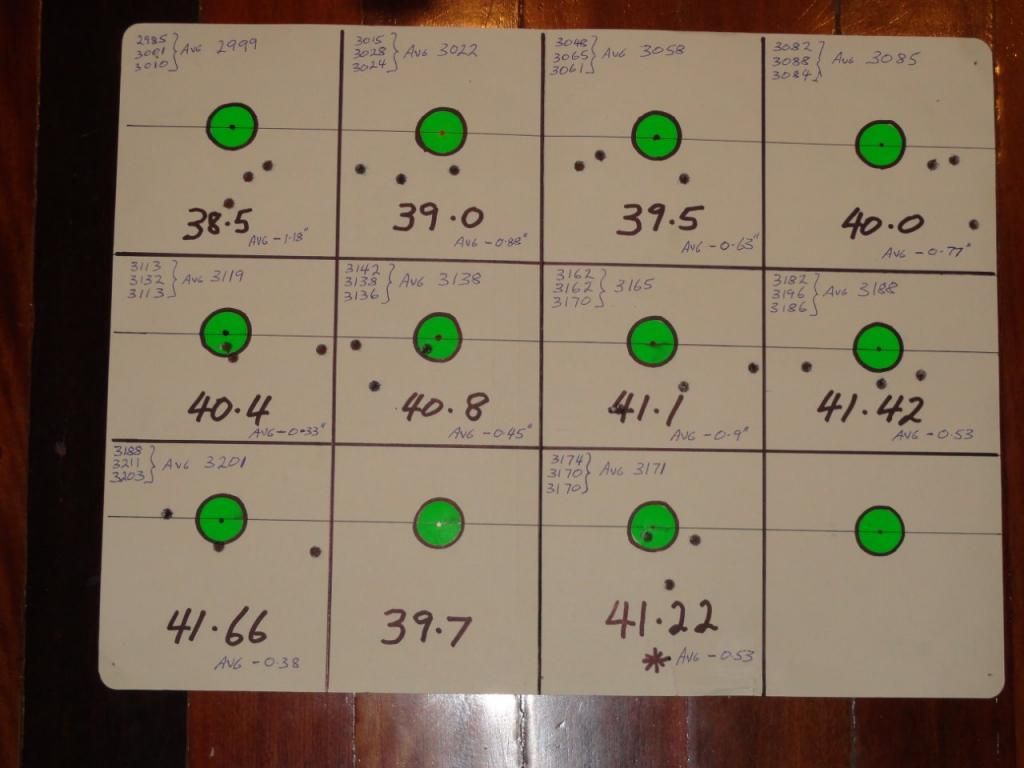
It was shot at 300 yards, genuinely “Round Robin” with a minimum of 45 secs between shots, with velocities written in the TOP LEFT of each target area, and the AVERAGE of the drop from the point-of-aim, in decimal INCHES recorded in the bottom right of each target square.
I shot them in the order : 38.5gr, 39.0gr, 39.5gr, 40.0gr, 40.4gr, 40.8gr, 41.1gr, 41.42gr, 41.66gr, and finally 41.22 gr.
The “round robin” firing order was maintained in the same order, for all 3 sequences, resulting in 10 x 3 shot groups.
I should explain that the 41.22 gr was added last, after I had already prepared the target for use, because a triple check of some bullet data averages for Quickload dropped the faster OBT from 41.42gr down to 41.22gr
Hopefully David can/will come in now, and post his handiwork for us to continue to learn





